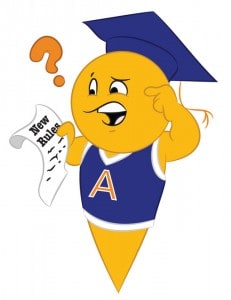A Look at Today’s College Recruiting Landscape
An article written by Charlie Adams for the NCSA Blog describes the changes in college athletic recruiting he has seen in the last 30 years. 30 years ago, recruiting wasn’t quite the fast-paced environment like it does today. You didn’t see 8th graders being offered verbal commitments, and there wasn’t nearly as much media coverage surrounding recruiting. But what really matters for those athletes who are currently entering the college sports recruiting process is the current landscape of college recruiting. For you, it doesn’t quite matter what happened 10 or 15 years ago;  what matters is how athletes go about getting a scholarship today.
what matters is how athletes go about getting a scholarship today.
Academics Matter More than Ever
Today’s coaches want athletes that can compete at the highest level, but more than ever they are looking for a well-rounded student-athlete. Under President Mark Emmert, the NCAA has focused on increasing academic standards for athletes. They recently increased the total credits of the academic progress rate required to be eligible for post season play The APR measures both a team’s ability to keep student-athletes academically eligible, and the graduation rate of specific sports teams. The NCAA also chose to raise the minimum GPA required to be eligible (starting with freshman entering in 2016) from a 2.0 to a 2.3.
The increased focus on the student-athlete ultimately benefits the athlete in more ways than a typical high schooler can imagine. These days, a college student-athlete’s college choices affects so much more than the next four or five years of their life; between the friends they will make and the network they will have, it’s a decision that affects the next 40 years. Employers are more likely to hire former student-athletes because they know the influence of their athletic experience. Student-athletes are usually better at time management, working in team environments, more competitive and self-motivated, among many other athlete-specific qualities. All these things make them a better job candidate, and that has nothing to do with them playing at the division I level.
These days, athletic directors and coaches don’t have enough time or resources to properly educate students and their families about the college recruiting process, and it’s created an opening for websites like ours, which aims to help athletes become more informed about recruiting, and for recruiting services such as NCSA to help athletes get recruited by taking a more active role in their process. Whether athletes choose to use information available for free (which requires much more work on the athletes end), or they choose to create a profile on NCSA’s network to be viewed by college coaches, it’s becoming increasingly evident that help is needed to find a scholarship.
Recruiting Starts at a Younger Age Today than it Did Years Ago
Athletes need to complete more core courses earlier in high school, the NCAA has lowered the age restrictions on communicating with coaches, and with all the options available out there athletes need to begin researching schools and making contact with coaches earlier than before; doing that on your own can be daunting.
Becoming more informed about the current landscape of the recruiting process can correct one of the biggest mistakes recruits and their families make: not properly evaluating their and setting their college expectations. Researching colleges to find one that best fits your qualities is more valuable than anything else in the recruiting process. There are multiple factors to think about: school size, division level, location, etc.; the list could go on forever. Too often though, athletes and their parents are dead set at playing at the division I level- which leads to more athletes not being able to find an opportunity than anyone not associated with the college recruiting process could imagine.
People who tend to “window shop” at division I schools should understand the changes to the level of competition across all NCAA divisions, and even the NAIA. There are good athletes almost anywhere, and forcing yourself to only look at a school because it is division I will cause you to miss out on an opportunity that may be perfect for you.
Are you ready to commit some time to the recruiting process? Ask us how we can help you in the comments section below, or connect with us on Facebook, Twitter, or Google+!
Find opportunities for athletic scholarships and get connected to college coaches.
